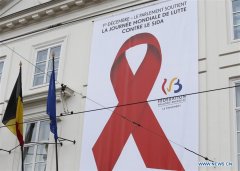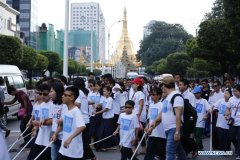China Focus: Extra insurance scheme prevents illness-related poverty
ZHENGZHOU, Sept. 26 (Xinhua) -- Medical insurance saved Jin Kexi 4,854 yuan (730 U.S. dollars) this year, an amount equal to two years of the living allowances he and his wife receive.
Jin, 75, a native of Jiaozuo in central China's Henan province, was hospitalized earlier this year with emphysema. He only paid around 10,000 yuan for his treatment which cost 36,600 yuan in total, thanks to insurance, compensation from a rural medical cooperative and government aid of 4,600 yuan.
"The extra insurance helped a lot," said daughter Jin Lixia.
Jin's wife has been paralyzed since 1996. The family's only breadwinner, Jin's son, was seriously injured in a traffic accident last year and cannot do heavy work any more. The old couple live on a monthly government allowance of 120 yuan per person.
Jiaozuo adopted the new supplementary insurance program in April, targeting 140,000 registered disadvantaged people.
Under the scheme, the government pays a premium of 100 yuan per person to PICC Health Insurance Company. Beneficiaries can receive a maximum of 300,000 yuan from the company each year.
"The insurance is one aspect of precision poverty relief," said Ning Jixue, head of Jiaozuo Health and Family Planning Commission. Since April, more than 900 people in the city have felt the benefit of the program.
Poverty reduction remains a priority of the Chinese government, after the country became the first to meet the United Nations' target of halving its poor population.
China aims to lift the remaining 50 million people out of poverty by 2020, through support for industry, education, employment and medical care.
Poverty and illness are not a good combination, and a common mix in many places. Illness is a great obstacle to the ambitious goal, although the rural medical cooperative system covers more than 97 percent of rural residents, and extends to up to 75 percent of medical fees, in principle.0 The number of households finding themselves in poverty due to illness is around 12 million, more than 40 percent of all registered needy families, according to the State Council Leading Group Office of Poverty Alleviation and Development.
Jiaozuo's current additional insurance scheme is based on a version adopted by the city in 2014. With no cap on the former medical aid plan, the insurance company lost 3 million yuan in one year. The scheme was suspended, reconsidered and reactivated this year after improvements were made.
The insurance plan adopted by Sanya City, Hainan province, at the end of August, has the government paying 100 yuan per person each year allowing beneficiaries 10,000 yuan for serious illnesses and 60,000 yuan for deaths or disability through accidents.
Last year, commercial medical insurance covered 3.6 million people in Tongren City, Guizhou, one of the country's poorest provinces. The city began the insurance plan in 2013.
With basic and commercial medical insurance, participants in Tongren can write off 80 percent of their medical fees when the cost exceeds 100,000 yuan. More than 40,000 people have benefited from the scheme.
"The method is effective in addressing illness-caused poverty," said Shi Huagu, a medical care official in Tongren.















